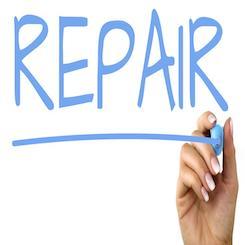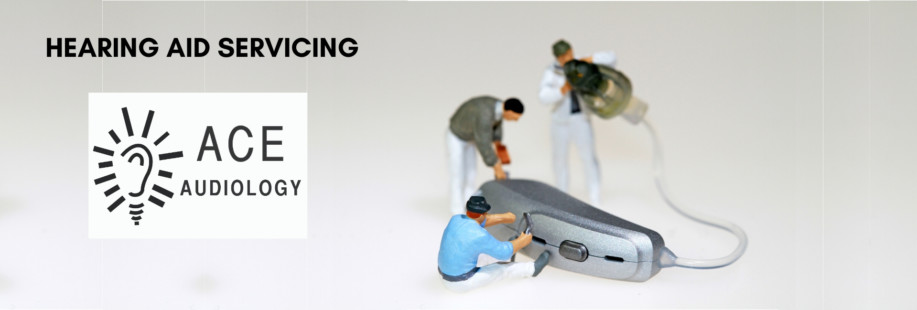Hearing Aid Maintenance

We understand that your hearing aid, provided by a hearing care professional, is not just a device; it’s an essential tool for your quality of life. Proper care and maintenance ensure that your hearing device continues to deliver optimal sound quality, keeping you connected to the sounds of the world around you. Let’s explore some crucial tips and insights to extend the life of your hearing aid and keep it in top shape.
ACE Audiology Melbourne offers a comprehensive ten-point hearing aid service check to ensure that your hearing aids are effectively meeting your hearing healthcare needs. It is highly recommended that you schedule a hearing aid service check at least annually to stay on top of things. Earwax poses a natural challenge to hearing aids and can potentially damage the delicate receiver in the ear canal.
Maintenance Hearing Aid Cleaning
Regular cleaning is fundamental to maintaining the functionality and longevity of your hearing aid. Keeping earwax accumulation under control and regularly cleaning the receiver are crucial steps in ensuring the longevity of your hearing aid. Additionally, dust and moisture can also be problematic, highlighting the importance of professional cleaning and regularly monitoring your device for any signs of buildup. There are also hearing aid hygiene sprays available from your audiologist to purchase.
Here’s a simple cleaning routine you can follow:
- Daily Cleaning: Use a soft, dry cloth to wipe down the exterior of your hearing aid. Make sure to remove any earwax or debris from the surface.
- Weekly Deep Clean: Use a cleaning brush or pick provided by your audiologist to gently remove any buildup from the microphone and receiver openings. Be careful not to push debris further into the device.
- Check the Filters: Some hearing aids have filters that need regular inspection and replacement. If your device has filters, follow the manufacturer’s guidelines for cleaning or replacing them.
- Avoid Moisture: Moisture can damage your hearing aid’s delicate components. Store your device in a dry, protective case when not in use. Consider investing in a hearing aid dehumidifier to remove excess moisture overnight.
- Keep it Dry: Remove your hearing aid before showering, swimming, or engaging in activities where it might get wet. If your device does get wet, remove the battery and allow it to dry completely before reinserting the battery.
Cleaning Behind-The-Ear Aids
Cleaning behind-the-ear (BTE) aids is crucial for maintaining optimal hygiene and performance. Use a soft, dry cloth to gently wipe down the exterior of the device and remove any accumulated dirt or sweat regularly.
Cleaning In-the-Ear (ITE) and In-the-Canal (ITC) Aids
To clean your hearing aid, start by wiping the exterior of the device with a soft, dry cloth. Next, utilise a wax pick or brush provided by your audiologist to carefully remove any wax or debris from the microphone and receiver openings. Finally, clean the earmold or custom shell using a mild soap solution and water, ensuring thorough drying afterwards. Following these steps regularly will help maintain the cleanliness and functionality of your hearing aid.
Cleaning Your Hearing Aids Effectively
Ensuring you clean your hearing aids properly is crucial for maintaining optimal performance and extending their lifespan. In addition to cleaning, don’t forget to check the volume control regularly and replace hearing aid batteries as needed. Keep an eye on the battery door for any signs of wear and tear, and follow these general tips for regular care to keep your hearing aids in top condition.
Why Does Hearing Aid Maintenance Matter?
Hearing aid maintenance matters because it directly impacts the device’s performance and longevity. Proper maintenance, including regular cleaning and care, ensures optimal sound quality and prevents potential damage caused by earwax, moisture, or debris buildup. By staying on top of maintenance tasks, individuals can maximise the effectiveness of their hearing aids and maintain their connection to the sounds of the world around them.
Hearing Aid Batteries Issues
Some common issues with hearing aid batteries include premature drain, inconsistent performance, difficulty inserting or removing batteries, and corrosion. Premature drain may occur if batteries are exposed to moisture or if they’re stored improperly. Inconsistent performance could indicate low battery power or a need for cleaning.
Difficulty inserting or removing batteries may be due to poor battery compartment design or improper handling. Corrosion can occur if batteries are left in the device for too long or if moisture gets into the battery compartment. Regularly checking and replacing batteries, storing them in a dry place, and keeping the battery compartment clean can help prevent these issues.
The Best Ten-Point Hearing Aid Service Checks
This service typically includes thorough inspections of various components such as the microphone, receiver, and battery compartment. These ten-point service checks are essential for maintaining the longevity and effectiveness of your hearing aids, ensuring you receive the best possible auditory experience:
- Dehumidification Chamber
- Battery contact check and clean/or Rechargeable Battery Status Check
- Microphone port inspection and suction
- Receiver Casing Cleanse
- Volume/Program Switch function test
- Case Damage check
- Receiver filter exchange
- Dome Exchange /or ear mould ultrasonic cleansing.
- Smart Phone Application Update and Functional Check
- Subjective Listening check
ACE Audiology Melbourne welcomes your visit to check over your hearing aids to keep them humming along beautifully.
HANDY HINT HEARING AID REPAIRS!
Save yourself some expense by having a thorough hearing aid maintenance check before the warranty expires. This way, any closed-case hearing aid repair needs can be identified and sent to the hearing aid manufacturer.
